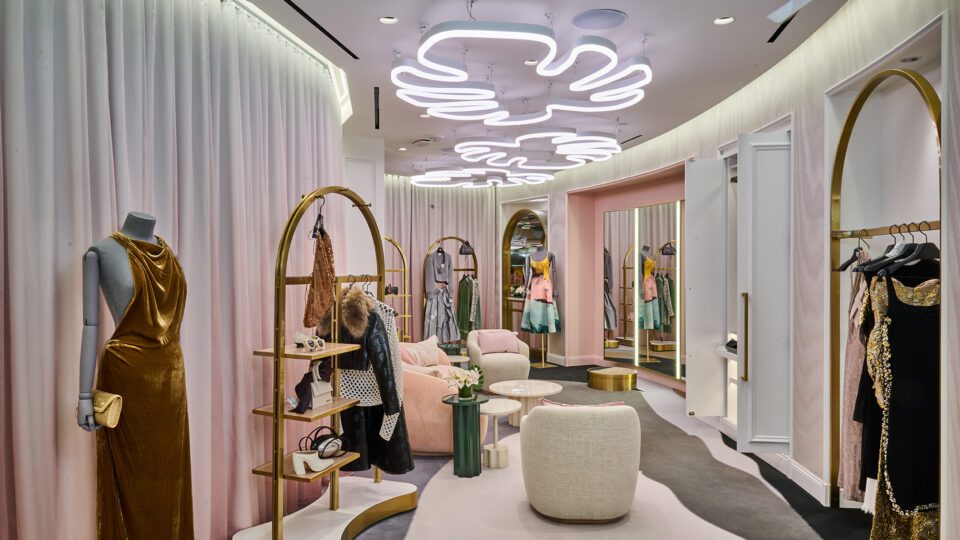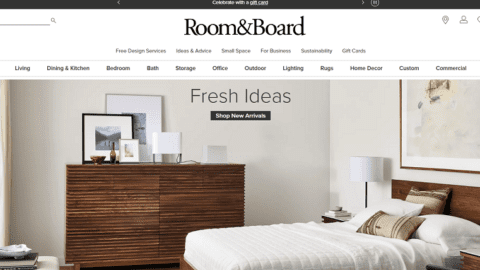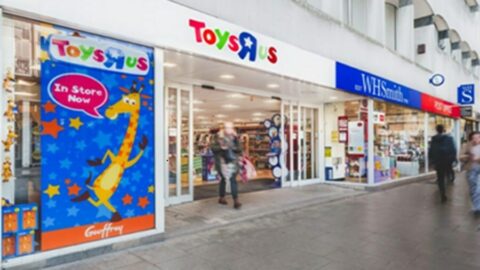Global design and consultancy organization Arcadis (formerly CallisonRTKL) recently worked with Saks to reinvent its West Coast flagship experience. but the company also has worked with its portfolio of luxury clients on a range of new store designs and experiences.
Based on the innovation that’s evident in all these projects, Sterling Plenert, Principal at Arcadis, believes the broader industry has a lot to learn from luxury players.
In an interview with Retail TouchPoints, Plenert outlined five key store design and experience lessons from the luxury sector.
Embrace the ‘Ceremony’ of the In-Store Experience
During COVID-19 shutdowns, consumers quickly got used to browsing and buying online. While ecommerce gave consumers speed and convenience, consumers realized that it simply could not replicate the ceremony that can be created in stores — and this is one area where luxury brands really shine, according to Plenert.
“Now that consumers have come back into the stores, everybody really wants an experience,” Plenert said. “When they go shopping, they want to be treated specially. They want to have the full ceremony of having something wrapped up and presented to them.”
For example, in Saks’ redesigned Beverly Hills flagship, the heritage department store dedicated more space to exclusive services and styling, which makes new customers and big spenders alike feel special, said Plenert: “At the highest end, almost every store we’ve done has added a VIP room with its own fitting rooms that they can close off and make an experience that’s very special.”
Constantly Test and Iterate Design Concepts
Retailers like Macy’s have made headlines for their moves to right-size their store fleet and invest in new, much smaller, store formats and experiences. But many luxury retailers are actually considering larger spaces, and in combination with the greater frequency of luxury retail renovations, high-end brands and retailers need to take a data-driven, more agile approach to store design and experience.
“Luxury stores tend to have a faster cycle for store renovation than any other specialty retail category,” Plenert said. Plus, many luxury brands are venturing into new categories, which requires them to reassess and update store experiences.
“You have to have areas in the store that cater to these new product categories,” said Plenert. “When you add a beauty line, for instance, you want to add a table with a mirror where you can have somebody show them how to effectively use items, you want to add perfume testing, you want to show those things off. That all requires new fixtures, furniture and other elements to make it work.”
After these new areas are in-market, brands can analyze store traffic and sales data to determine if the space needs to be further updated or refined to better align with consumer behaviors.
Although the scale of these renovations hasn’t sped up, Plenert noted that his firm is seeing new store expansions in addition to renovations, which is creating even more store design activity. “The stores are becoming much larger to accommodate expanding product lines as well as those new experience areas,” he explained. “A couple of years ago, a typical non-flagship store was about 8,000 square feet. Now they’re anywhere between 11,000 and 15,000 square feet.”
Advertisement
Learn how luxury brand Kurt Geiger is investing in brick-and-mortar growth.
Listen to the interview with CEO Neil Clifford.
Bring Hospitality into the Mix
In primary markets such as Los Angeles and New York City, brands are venturing into hospitality. The goal is to create more authentic and culture-driven environments that draw in new customers, even younger ones, who may not necessarily be ready to spend big bucks now — but might in the future.
“It’s another way to expand the brand footprint,” Plenert said. “Several brands have found that the cafés are more profitable than the stores.” For example, when the Ralph Lauren on Fifth Avenue closed, the retailer kept the Polo Bar open because it was always booked solid. And when Tiffany & Co. renovated its Fifth Avenue location, it added the Blue Box Cafe, which has become a hot destination for tourists and Manhattanites alike.
“It brings in a different type of customer that’s there for the experience, has them lingering the store, and it gives them more connection to the brand because they’re living the brand lifestyle,” said Plenert. “If it’s done properly, it’s a very good expansion for a store because it also brings in customers that don’t normally go to that store, or may feel intimidated to go in. They’ll go with their friends, have lunch and then shop afterwards.”
There are multiple ways to embed hospitality into a retail space: Coach and Ralph Lauren both have successful coffee shops, while Dior has ventured into spas. “There are a lot of different ways to expand that brand recognition,” Plenert said. “And it’s good for loyalty in the short and long term.”
Find New Ways to ‘Pop Up’
Brands and retailers can design pop-up shops to meet various goals, such as raising brand awareness, testing new markets, and celebrating product launches and special events. While these objectives are very much present in luxury brands’ pop-up initiatives, they primarily use pop-ups as a vehicle for pushing creative limits.
“The main advantage of the pop up is that they can try out new things,” Plenert said. “When you’re spending a substantial amount of money doing a flagship store, you have to focus on the heritage and what people expect from a store. However, when you’re doing a pop-up that’s only up for a weekend, week or month, you can do anything you want.”
For example, brands can test new color palettes and materials. They can embrace new collaborations with complementary brands, artists, cultural figures or community organizations. Most recently, brands have embraced the local trends, styles and cultural aspects of big events such as South by Southwest, according to Plenert.
“It allows you to experiment and have some more fun with it,” he said. “It also is a way to bring in new customers that may feel intimidated to go into a big store. They may see something that looks like a fun social media moment , then they get to interact with it and then they spread it on social media, too. That’s free advertising.”
Consider ESG Goals and Mandates
In the 2023 Retail TouchPoints Store Design & Experience Survey, 68% of respondents said that more integration of sustainability into design plans and material decisions was a top priority for the year. Plenert noted that some of the world’s top luxury brands, such as Kering and LVMH, are leading in this area because they have more established (and measurable) Environmental, Social and Governance (ESG) goals in place.
“The best [luxury brands] are very much looking at new materials and sustainability is definitely a highlight in that,” Plenert said. “The big luxury companies are requiring that all stores meet certain sustainability levels. Even if they don’t go for LEED or WELL certification, they’re making sure they meet those requirements.”
Arcadis works closely with LEED consultants on many projects to ensure they follow these protocols and best practices across the entire project lifecycle. For example, during the demolition process, materials get sorted and recycled, but more often, brands are exploring ways to reuse and repurpose existing fixtures and materials — a decision that’s both environmentally- and budget-friendly.









